An ideal guide to selecting the best car wax
Everyone loves that shiny new car look, and waxing can give your car that sleek, glossy look. The color, quality, and vividness of the paint matters. A lot of people wash their cars, but they don’t wax them as often. It is an excellent way to improve how your vehicle looks and protect the car’s exterior. Waxing the car is a little bit labor intensive, but you will be proud of the outcome. Deciding on the right wax can be hard as there are hundreds of products available and they are all beneficial.
What is car wax?
All you need to know to get the best car wax
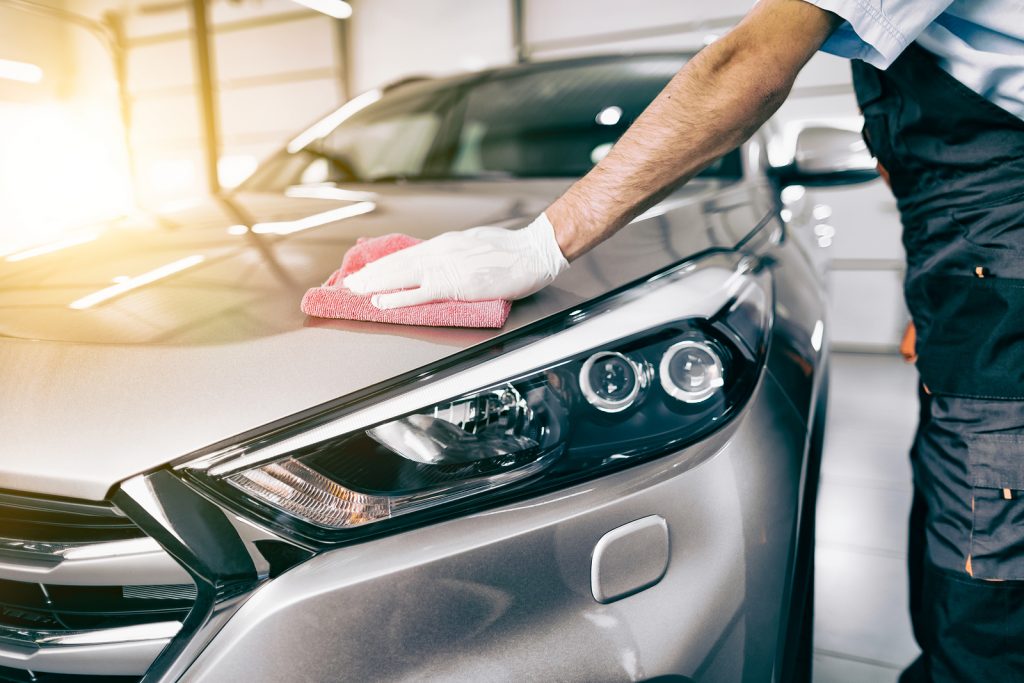
Photo on expertreviews.co.uk
It is a hard hydrocarbon that can be derived from natural sources like the carnauba plant, palm or even coal or synthetically made from silicones. Since the wax is hard, it is difficult to spread it over the car. Solvents and oils are added to the mix to make it easier to apply. A car wax product can be made up of more than one kind of wax, oils, and solvents.Wax is mainly used to protect your car’s exterior. It is a barrier that protects the clear coat of the car’s paint job from dust, water, and harmful UV rays. Water poses a particular challenge as it can easily cause rust. Since the wax is hydrophobic, it repels the water either during a wash or rainy weather. Its hydrophobic nature makes it so efficient at repelling water making it possible to dry car wax with running water from a course. This is a good alternative to towel or contact drying, thus reducing any scratches that might happen.A common component used in the making of car wax is carnauba wax. It is ideal for use on cars as it does not wash away in water, it can withstand high temperatures and produces a beautiful, glossy finish when added to other products. A lot of the waxes in the market are a mix of carnauba wax, solvents, and pigments. Others have UV inhibitors that provide further protection to your paintwork from fading due to the sun’s rays.
What is the difference between polishing and waxing a car?
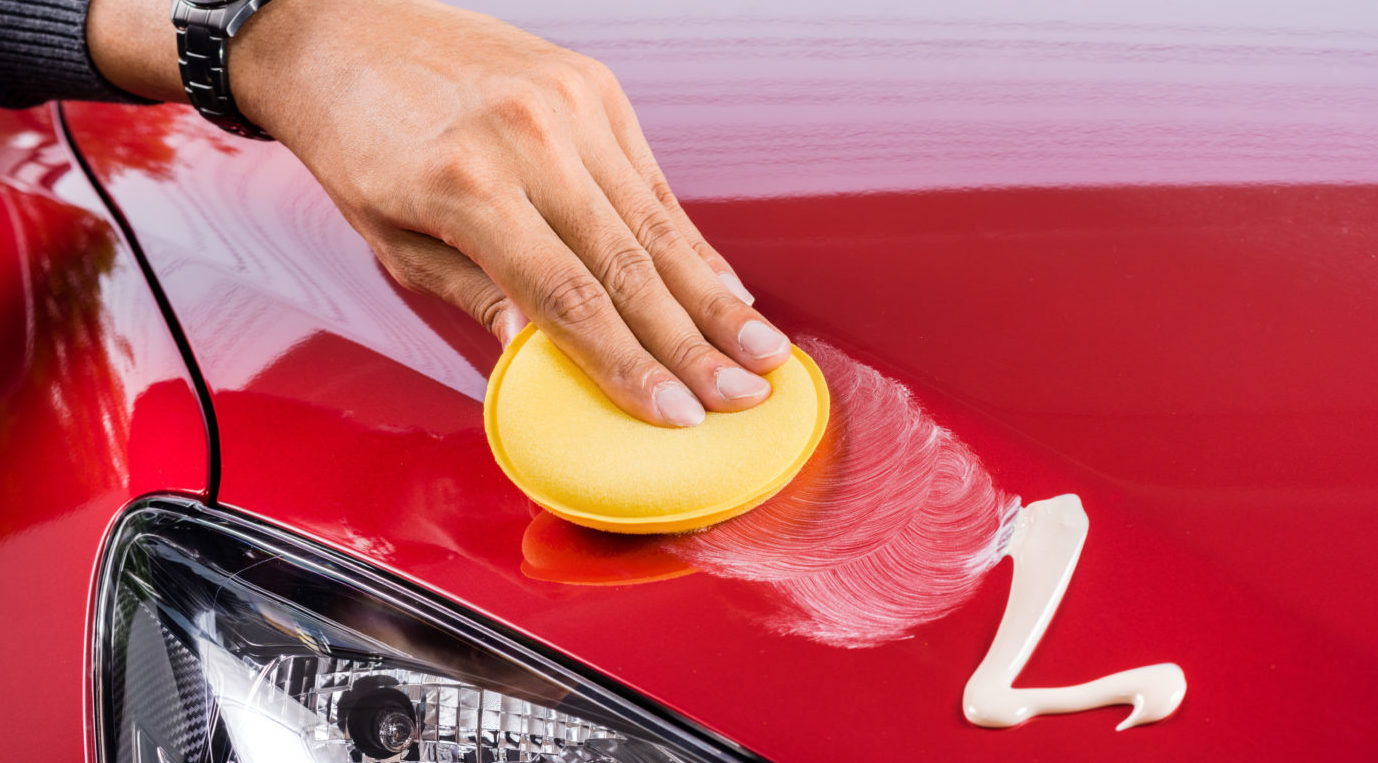
Photo on autodeets.com
A lot of people usually confuse between waxing and polishing. They seem to have interchangeable terms and some makers call their products polish when it is wax. The two are however very different.
Polish – it is an abrasive product that removes the very fine top layer of the top coat. How abrasive the product varies depending on the intended use. It should be used before wax to restore auto paint that has lost its luster due to oxidation.Wax – it is a product that coats the car exterior with a material that enhances the shine of your car’s paint job. It also keeps the paint job from oxidizing or being damaged by road debris. Simply put polish removes a fine layer of the topcoat, while wax smoothens out the surface.
Benefits of waxing your car
- It gives the vehicle a shiny finish and makes the paint job stand out.
- It protects the underlying paint job from debris, oxidation and sometimes depending on the wax used UV rays, which can easily damage the paintwork. It can be scratched, fade or lose its luster.
- It is hydrophobic thus making the car water repellent. If water gets to the car body, it can cause it to rust thus affecting its integrity. Water also leaves water spots on the paint job which can be unsightly. When the car is waxed, the water runs off instead.
- It can easily fill the gaps caused by scratches and other imperfections, thus mitigating the problem. It gives better results than repainting or using primers as it is hard to match the colors.
- Waxing helps reduce the cost of repair and refinishing costs. Whether you own the car or you have leased it, any damage to the paint job has to be repaired. Scratches and minor dents can be reworked with wax.
- It makes it more difficult for mud and dirty water to deposit grime onto the car.
- Since it repels dirt, it reduces their chances of causing scratches on the paint job.
- It is relatively easy to apply thanks to the additives put in.
When should you wax your car?
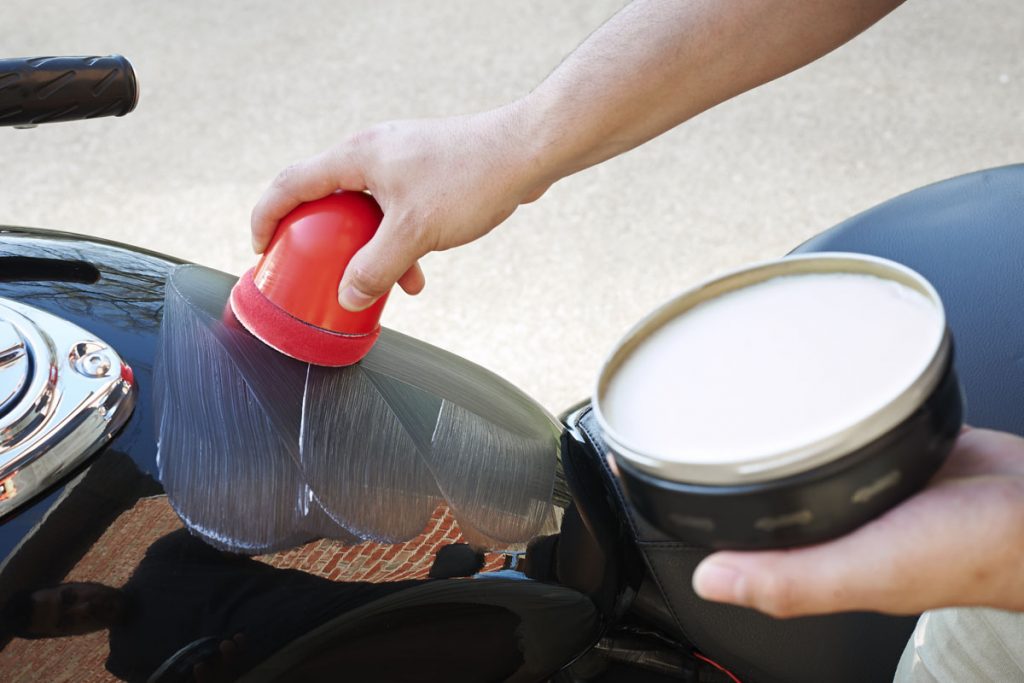
Photo on noblerate.com
This can refer to two things; when in the washing routine should you wax your car? and how often should you wax? The first part is easy to respond to as wax should be the last thing you apply onto the car’s exterior. After cleaning and polishing the car, waxing seals and protects the hard work you put in. A common mistake most people make is waxing and then polishing. All this does is to strip off the wax.How often you should wax your vehicle depends on the age of the car’s paint job and how you drive, whether it is racing or just using the car to get around. The more damage you expose your vehicle to the more times you have to wax and if necessary repair it. You cannot wax a car that has a new paint job as the paint takes sixty to ninety days to cure fully. If you wax it before solvents and other chemicals that need to evaporate from the paint will not be able to.
Types of car wax
A list of the kinds of waxes available
Car wax can either be synthetic or natural.
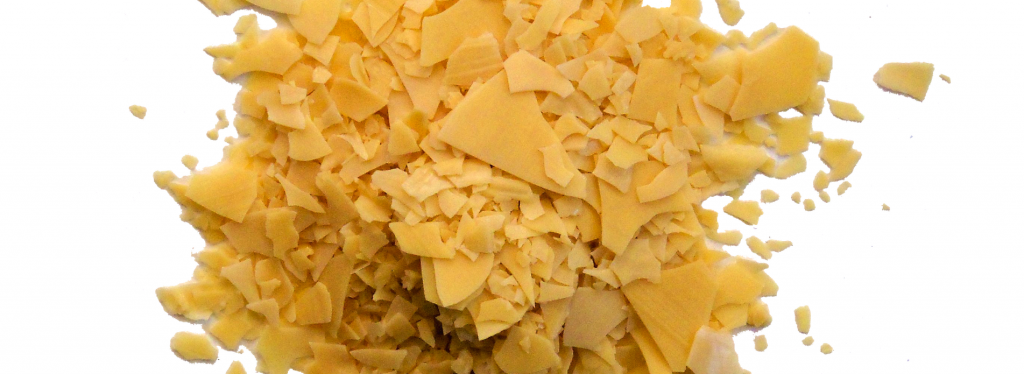
Photo on amazonaws.com
Natural Wax – It is also known as Carnauba wax. Carnauba is derived from the leaves of a palm tree native to Brazil. It is then processed and prepared for use n combining it with a solvent like turpentine or beeswax. It gives a sleek, warm, deep shine that is hard to imitate even with synthetic waxes. It is recommended for use on black or other dark-colored cars. It is good at protecting the paint from contaminants, and it also has excellent water repelling capabilities. It is available in two main colors: yellow and white, which is also a way to distinguish between the different grades of the wax; the yellow wax is made of pure carnauba and is the most costly.It is an environmentally conscious choice of car wax because it comes from a renewable resource. Where it is being sourced and how quickly it is being replenished also matter. It is hard to apply on its own, so it is combined with other ingredients and can be expensive because of how the ingredients are sourced. Whether a wax is purely or partially made of carnauba, it is considered as a natural wax product.
Synthetic Wax – They comprise a major part of the waxes available in the market. They are made to imitate natural car waxes and are made of polymers. They do not contain any natural wax ingredients which make them more of paint sealants than waxes. They are available mainly in liquid or spray form. This makes their application quite simple.they are not hard to rub into the body and buff a lot easier. They last longer as well as being more durable than natural car wax. Where natural wax needs to be redone after one or two months, synthetic waxes can last almost twelve months depending on the brand used and the weather in your area, before it needs renewal.
Hybrid wax – This wax is a mixture of natural and synthetic ingredients such as polymers and resins. They are recommended for those primarily concerned with getting the protection of natural wax with the durability of polymers.There are two sub-categories of wax that exist:Cleaner wax – they have some sort of cleaning capabilities by using either chemical solvents, cleaning agents or some type of abrasive. Some have all three components. They can be used to restore neglected paintwork depending on the condition of the paint and the cleaning strength of the agents in the wax. These waxes are marketed to the average car owner who doesn’t have an arsenal of products to use on the car exterior. Finishing wax – they do not contain any cleaning agents and are meant to be used only on paint jobs that are new, in excellent condition or recently cleaned and polished and the wax is being used to restore the paint job. They are typically labeled as finishing wax and are marketed to detail enthusiasts as the last step in getting that sleek, glossy look.
Different forms car wax come in
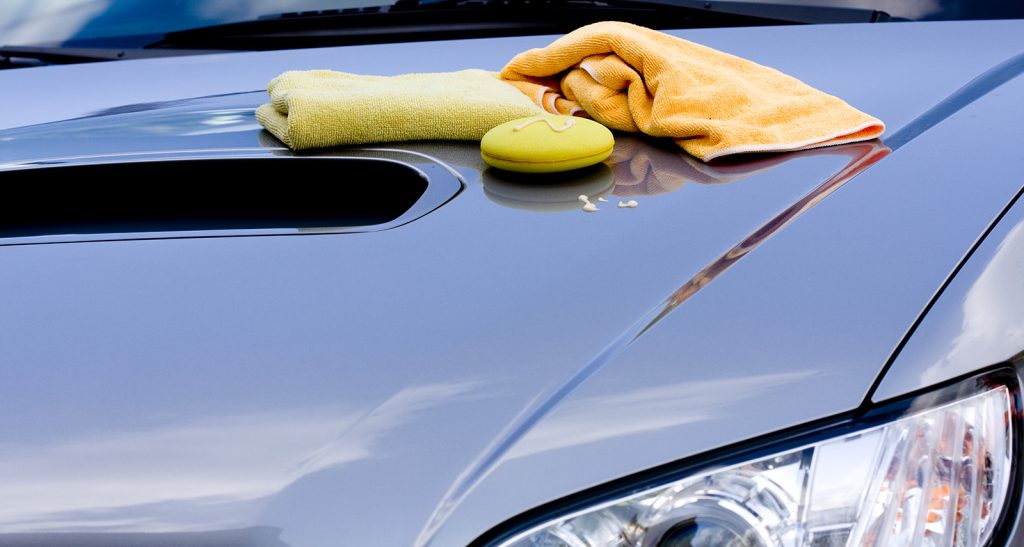
Photo on tkographix.com
Both Natural and Synthetic waxes come in the following forms. There are several distinctions in the way each wax works and understanding these differences can help you in making the right choice.
Paste -It the oldest form among the types of car wax. It has a hard texture. The car’s surface has to be kept warm, by running the engine, to help in the application of the wax. The luster of paste wax tends to fade faster than liquid wax. Some pastes can contain abrasives so be careful while applying them onto the car’s body.Spray – They are referred to as quick detail waxes and are applied when the wax coat needs a boost or is starting to wear off. They cannot replace paste or liquid waxes and the wear off quicker. It is handy to have such a product around.Liquid – It has a smoother texture compared to paste wax. It is preferred because it is durable, gives the best overall gloss. Natural liquid wax contains synthetic polymers to increase its durability. Liquid wax is quite hard to apply compared to the paste or spray waxes.They also come in these other specifications.
Colored: these are pigmented waxed that are dyed to match the paint colors available. The purpose behind it is that it will better hide any blemishes such as swirls and scratches. They are ideal for cars that do not have a clear top coat. High temperature: these are made to withstand the high temperatures on black vehicles in really hot weather. They resist hazing and streaking. Wheel wax: these waxes are made to stick to painted or polished wheels, and they repel brake dust, water, and other contaminants. They are made to hold up in the high temperature, high speed and contaminant rich environment that surrounds the wheels.
Factors to have in mind when choosing a car wax
Essential tips to remember when choosing car wax
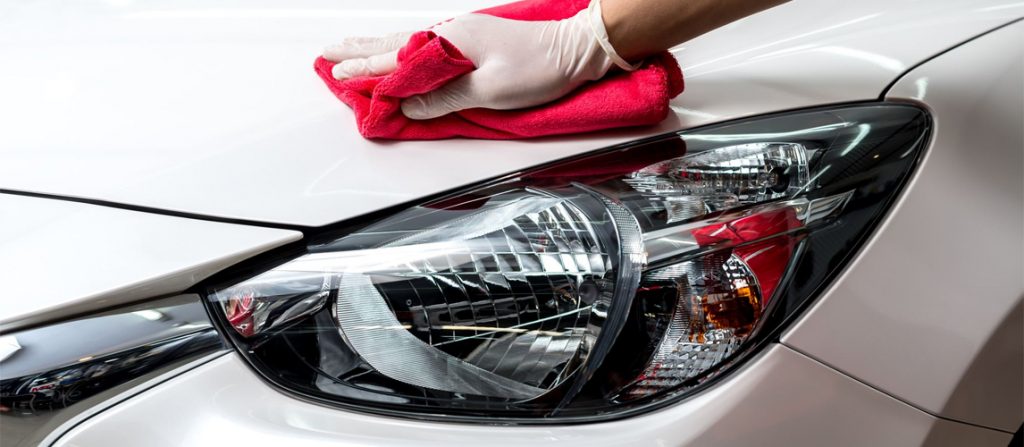
Photo on carbibles.com
Factor in the age of your carThe age of your car matters as it determines the kind of wax you will need. If it is less than two years old the finish is still in good condition, and a simple spray wax may be enough. As the vehicle gets older, it will need regular waxing to help preserve the finish. If the car’s paint has already begun to oxidize or has grime embedded in it, you may opt for a cleaning wax to remove the dirt and restore the car’s luster. Liquid waxes are best suited for this. Be careful of abrasionWaxes can be abrasive so be careful when using them to prevent scratching or hazing the clear coat of the car. Scratches are more prominent on dark colored vehicles than on light colored ones. If you own a dark-colored car, keep away from waxes that can make the clear coat finish look dull due to the many microscopic scratches caused by the wax. Most waxes products indicate whether they are clear coat safe.Consider the amount of plastic on your carWax can sometimes leave a visible residue on non-glossy, porous plastic materials such as the bumper, plastic body panels or the door trim. New car models have more plastic parts so choose a wax that is compatible with plastics. If you use a wax that is not compatible with plastic, you will need to use a plastic cleaner to remove the residue. Get the right wax for your carYou should get a wax that matches the care needs of your automobile either liquid, paste or spray. Paste waxes are simpler to use than liquid wax; liquid waxes produce the best overall result and spray waxes are the easiest to use, stained the plastic parts less but lasted the shortest time.
How to wax your car
Applying car wax to the vehicle
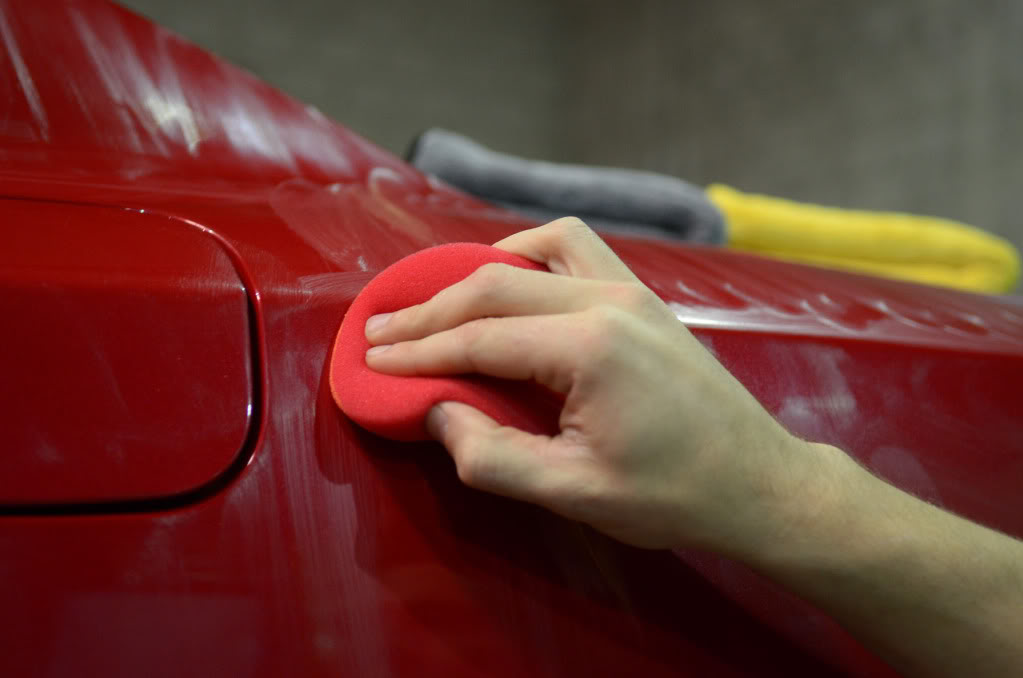
Photo on ecocarcarefl.com
Before using any wax it crucial to first read the instructions well and test it out on a small spot to find out how the ingredients of the wax can affect your car. What you use to wax your car matters and it can make the job harder or easier. Using a microfiber rag removes residue easily and works in the wax better. If you are using a buffer make sure to replace the microfiber finishing pad.Wash your car thoroughly and make sure it dries completely. Do not clean your car in direct sunlight as the heat softens the paint making it susceptible to scratches. Use microfiber cloths or lambswool mitts to clean the car and apply the wax. Always work from the top going down as the lower surfaces have more contaminants and grime and they can get stuck to the mitt or cloth and cause scratches. Remember that wax coats cannot be layered so make sure you apply it well.Here are the general guidelines for applying wax either by hand or machine.
Applying wax by Hand
- Apply the wax to your car in a shady place unless otherwise stated on the container. It the wax dries too fast and is left to sit too long it can be a lot harder to remove the excess or work it in to get a clear finish.
- Only wax the car once it is completely dry. If the applicator was to absorb any water, it could cause streaking which is hard to correct.
- Use a poly foam, microfiber or wool applicator to apply an even, thin layer of the wax across the panel. The motion you use is not as important as keeping the surface and applicator clean.
- If the kind of wax you are using requires it, you can leave it to sit and dry. Be sure to go through the instructions well.
- Buff out any excess wax with a microfiber towel to reveal a clear finish
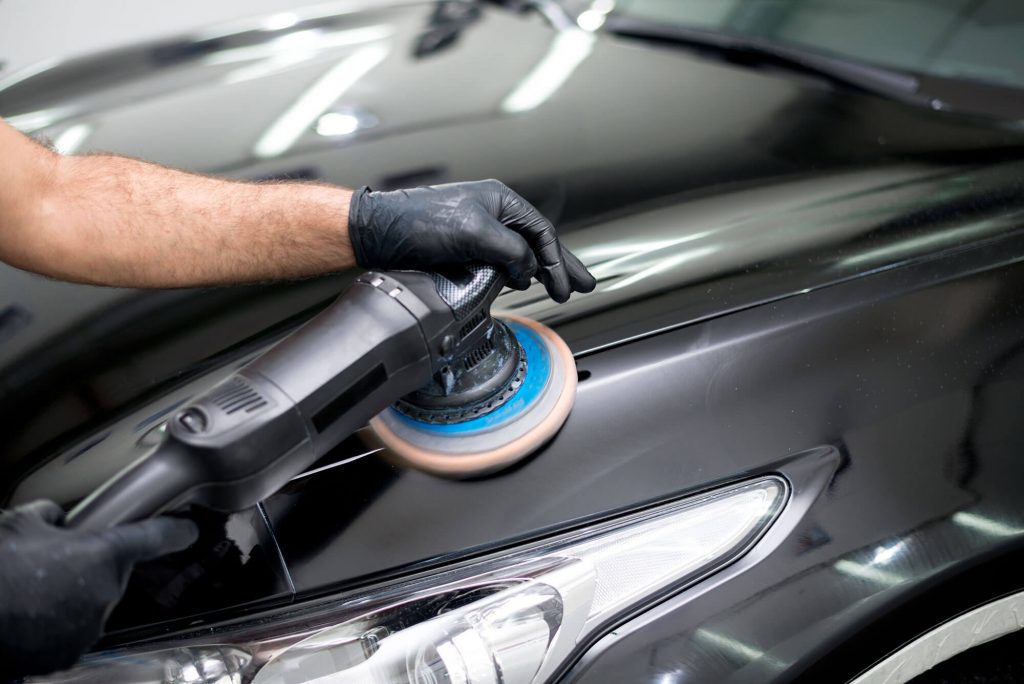
Photo on inoutcarwash.com
Wax application by machine
- Install a clean foam or microfiber pad onto the polisher.
- If you are using paste, spread it evenly across the pad just like buttering a piece of bread. For liquid wax use a few dots of the wax on the pad.
- Place the polisher on the car panel you are working on and spread the wax a little before turning it on. Turn the machine on and spread the wax evenly across the panel surface.
- Once you are done with one section and you want to move to another, turn off the machine to prevent slinging the wax in the air.
- Be sure that you go through the instructions well before using the wax. Depending on the way you can continue with the application, or you might have to wait for it to dry to a haze first. It is imperative that you read the directions on the wax to be on the safe side.
Do not wax cars with a matte finish as shining agents are not meant for use on such finishes. You can easily remove wax from the car by using wax removers or some polishing compounds. This might be done during paintwork, compounding work or when you want to install vinyl graphics or emblems.